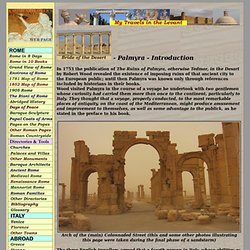

Palmyra Wood. I don't speak html particularly well, so I'll keep this brief.

WSO has provided alumni websites and mail forwarding for a long time - I don't know how far back it goes. But this winter, we were faced with the prospect of continuing to provide public-facing ssh accounts for thousands of alumni, almost none of whom we knew, in an era where university networks are sought after by attackers. So we decided that this was a service that had to be cut. Given that the server hosting these ssh accounts is also known to have the personal records of former students scattered all over the file system, we have decided that further access to the machine is out of the question. WSO has never guaranteed the reliability of its services, and the data on that machine has long been one hard drive crash away from disappearing. I joined WSO last fall, and quickly became aware that WSO had a lot of technical problems. We've made a lot of progress on these issues. Simon Chase, Systems Administrator, WSO. Palmyra - Introduction. - Palmyra - Introduction In 1753 the publication of The Ruins of Palmyra, otherwise Tedmor, in the Desart by Robert Wood revealed the existence of imposing ruins of that ancient city to the European public; until then Palmyra was known only through references included by historians in their books.

Wood visited Palmyra in the course of a voyage he undertook with two gentlemen whose curiosity had carried them more than once to the continent, particularly to Italy. They thought that a voyage, properly conducted, to the most remarkable places of antiquity, on the coast of the Mediterranean, might produce amusement and improvement to themselves, as well as some advantage to the publick, as he stated in the preface to his book. Arch of the (main) Colonnaded Street (this and some other photos illustrating this page were taken during the final phase of a sandstorm) Columns of the portico surrounding the Temple of Bel Interior of the Temple of Baalshamin Oasis and Temple of Bel. Robert Wood's _Ruins of Palmyra_ (1753) 40 Hauntingly Beautiful Photographs of Graves Taken In Graveyards and Cemeteries. By Daniel on April 6, 2009 under Books, Featured, Photography · Tags: Cemetery, Creative Commons, Death, Featured, Featured Photography, Graves, Graveyard, Hauntingly Beautiful, Neil Gaiman, Photography, Photography Gallery, The Graveyard Book Photo Credit: Onkel Wart Last week, I spent a few pleasurably-languid hours reading Neil Gaiman’s “The Graveyard Book.”

Gaiman’s wonderful tale of a young boy – Nobody Owens – who is nurtured and protected by the ghostly denizens of a graveyard, transported me into another world, and made me contemplate about life, death and the afterlife. I had experienced the same feelings once before. That was while reading Emily Dickinson’s “Because I could not stop for Death.” We paused before a house that seemedA swelling of the ground;The roof was scarcely visible,The cornice but a mound.Since then ’tis centuries; but eachFeels shorter than the dayI first surmised the horses’ headsWere toward eternity.
Image Credit: Denise O’ Brien Image Credit: Smitty. 30+ of the most beautiful abandoned places and modern ruins i've ever seen. Abandoned Mill from 1866.

Sorrento, Italy Eilean Donan Castle. Photo by pboehi Holey trinity by rustyjaw Tunnel of Love, Kleven, Ukraine Abandoned power plant cooling chamber. Lighthouse Goražde, Bosnia. The Hotel del Salto, Tequendama Oval skeleton of the House of the Bulgarian Communist Party. Swallowed by Nature, Taiwan. Abandoned Power Plant. Curon Venosta, Italy Sunken Yacht In Antarctica Underwater statue of Jesus, Malta Under a blue sky. Winter sun. Scale. Church, Gary, Indiana. Herdman’s Mill. Theater. Fragments from a History of Ruin. Dimitrios Constantinou, The Temple of Zeus, 1860.

Image from Michel Makarius, Ruins (2004). For the eyes that have dwelt on the past, there is no thorough repair. —George Eliot, The Mill on the Floss 1.